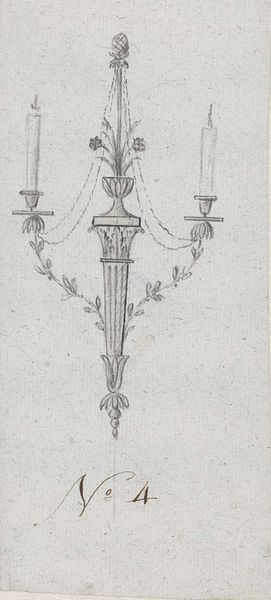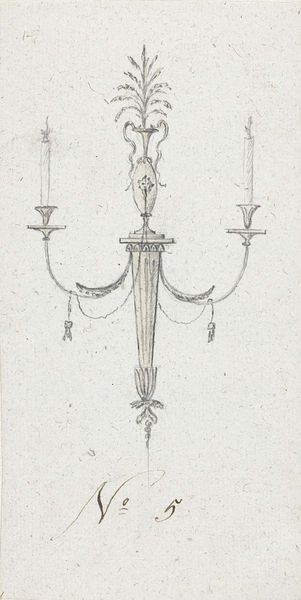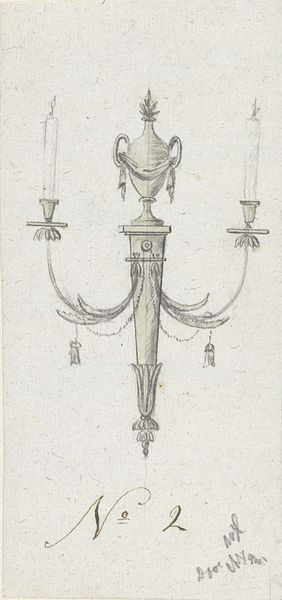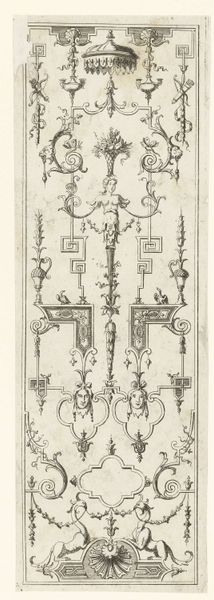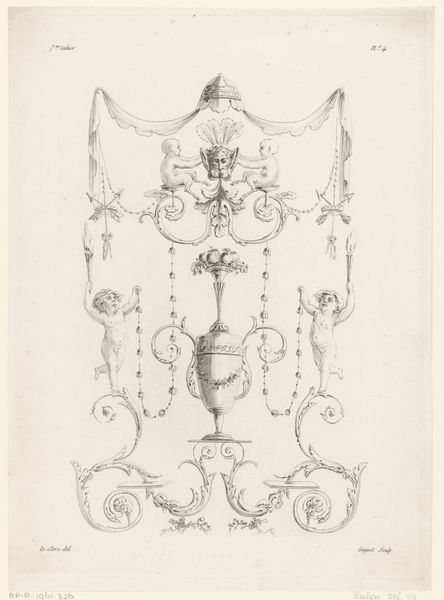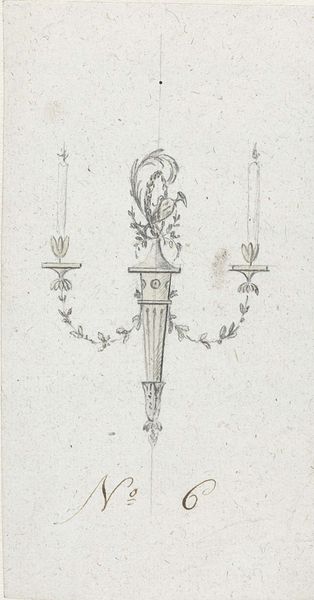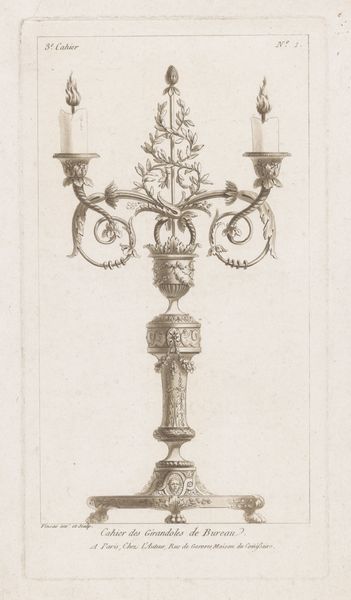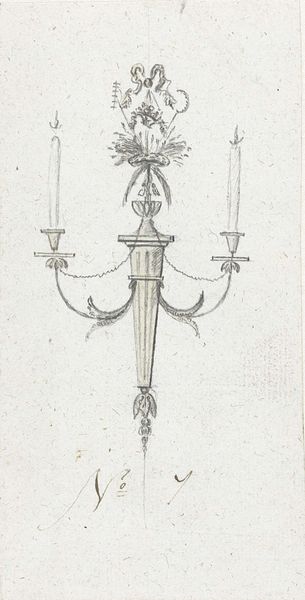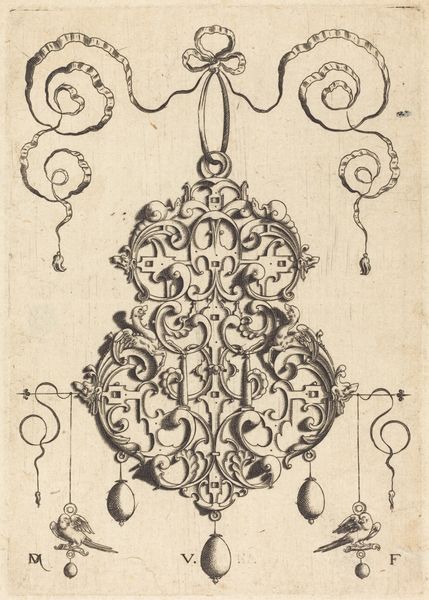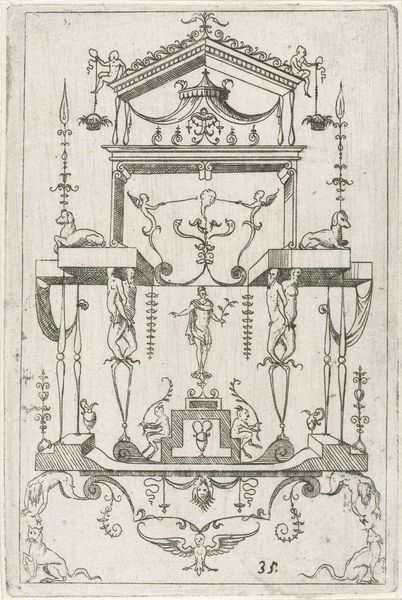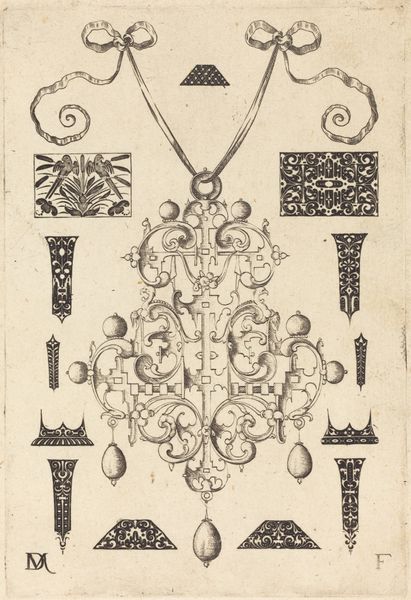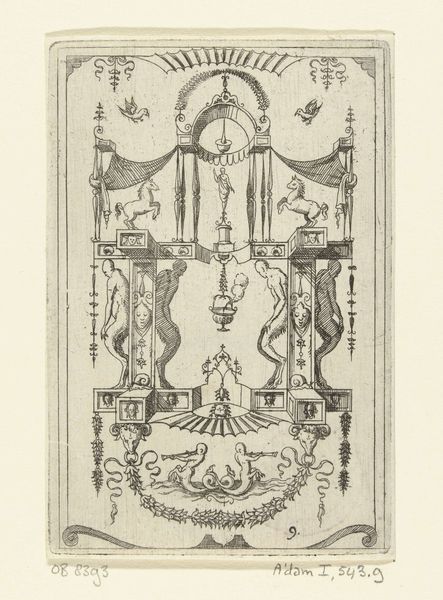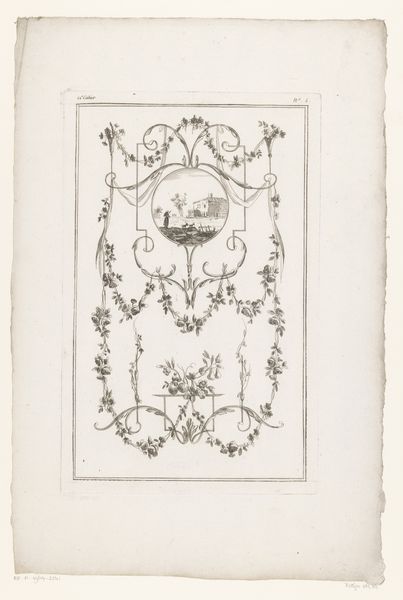
etching, engraving
#
etching
#
form
#
line
#
decorative-art
#
engraving
#
rococo
Dimensions: height 211 mm, width 146 mm
Copyright: Rijks Museum: Open Domain
This drawing of a vase with arabesques was created by Juste Nathan Boucher in the 18th century. The vase, brimming with flowers, sits atop a pedestal that is twined with garlands of laurel, all framed by a border of stylized arabesques. The vase, universally a symbol of receptivity, here overflows with life. A reminder of nature’s bounty, its form echoes the amphorae of antiquity. The laurel, seen intertwined around the pedestal, has roots stretching back to ancient Greece, symbolizing triumph and eternal life. Its presence here is more than decorative; it evokes a sense of timelessness. Consider how such motifs persist. Like the serpent coiling around the Staff of Asclepius, a symbol of medicine, the laurel here suggests renewal and health. These aren't mere images. They are carriers of collective memory, recurring across epochs, subtly altering, yet always echoing our primal aspirations for life and renewal. The emotion these symbols invoke engages us subconsciously, creating a sense of profound connection. The cyclical progression of these symbols, their resurfacing, evolution, and adaptation, form a non-linear narrative across time.
Comments
No comments
Be the first to comment and join the conversation on the ultimate creative platform.
